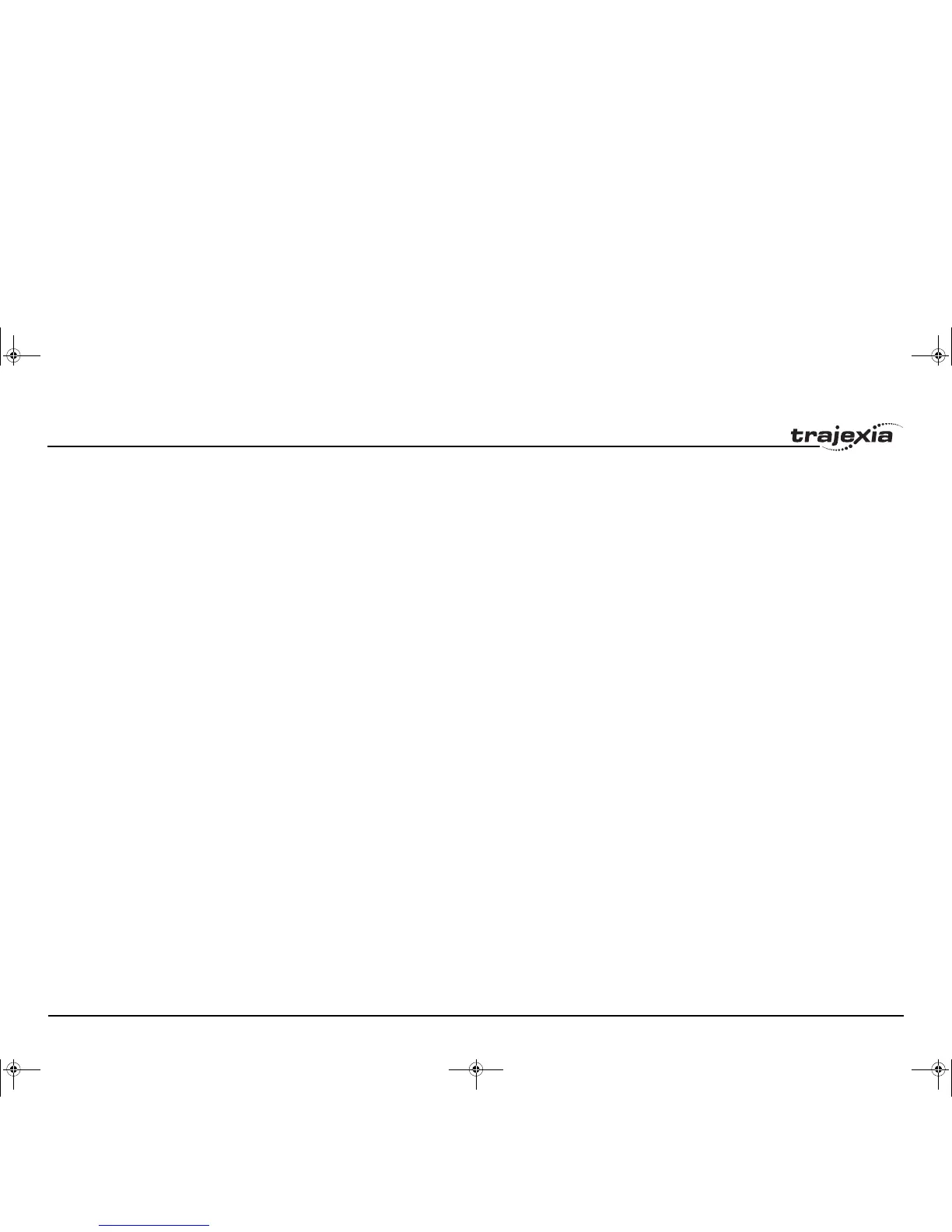BASIC commands
PROGRAMMING MANUAL 128
Revision 3.0
3.2.217 REG_POS
/i
3.2.218 REG_POSB
/i
3.2.219 REGIST
/i
Type Axis parameter (read-only)
Syntax REG_POS
Description The REG_POS parameter stores the position in user units at which the pri-
mary registration event occurred.
Arguments N/A
Example PRINT REG_POS AXIS(2)
This will print registration position in user units for axis 2.
See also AXIS, MARK, REGIST.
Type Axis parameter (read-only)
Syntax REG_POSB
Description The REG_POSB parameter stores the position in user units at which the sec-
ondary registration event occurred.
Arguments N/A
Example PRINT REG_POSB AXIS(2)
This will print registration position in user units for axis 2.
See also AXIS, MARKB, REGIST.
Type Axis command
Syntax REGIST(mode)
Description The REGIST command sets up the registration operation. The command cap-
tures an axis position when a registration signal is detected. With a TJ1-FL02
the capture is done by the hardware, so software delays do not affect the
accuracy of the position that is captured. With a MECHATROLINK-II axis, the
capture is done by the Servo Driver.
Flexible Axis, a REGIST command can capture two registration positions
using separate registration inputs. When a primary registration event has
occurred, the MARK axis parameter is set to on and the position is stored in
the REG_POS axis parameter. For the secondary registration event, the
MARKB axis parameter is set to on and the position is stored in the
REG_POSB axis parameter. This command is applicable only to flexible axis
axes with ATYPE values 43, 44 and 45.
MECHATROLINK-II registration can be performed using encoder Z-marker or
external registration inputs EXT1, EXT2 or EXT3. Unlike Flexible axis axes,
only one registration position can be captured. When a registration event has
occurred, the MARK axis parameter is set to on and the position is stored in
the REG_POS axis parameter.
The REGIST command enables a record of one registration event on the par-
ticular registration input. When a registration event has occurred, the MARK
axis parameter is set to on and the position is stored in the REG_POS axis
parameter.
The registration signals EXT1, EXT2 and EXT3 must be allocated to CN1
inputs with the driver parameter Pn511. For example Pn511=654x sets the
connections of EXT1 to CN1 pin44, EXT2 to CN1 pin45 and EXT3 to CN1
pin46.
The table below shows how to configure the external inputs individually.
Note: To configure EXT1, EXT2 and EXT3 registration signals parameter
numbers Pn511.1, Pn511.2 and Pn511.3 are used respectively. Pn511.0 is not
used. Refer to the user manual of the Servo Driver for more details.
I52E-EN-03.book Seite 128 Freitag, 29. Juni 2007 11:55 11
